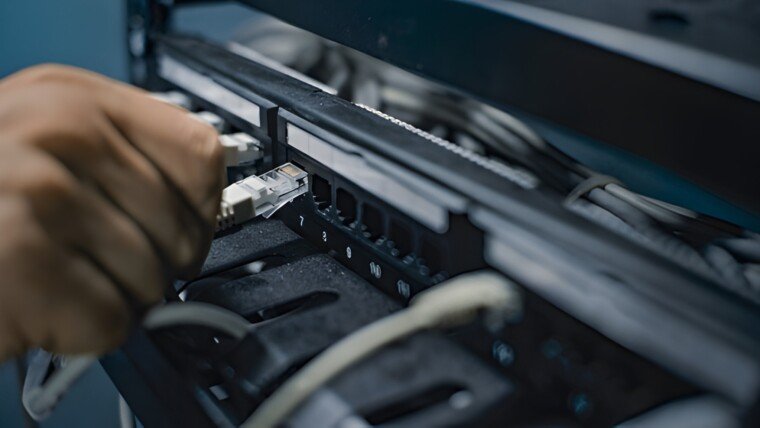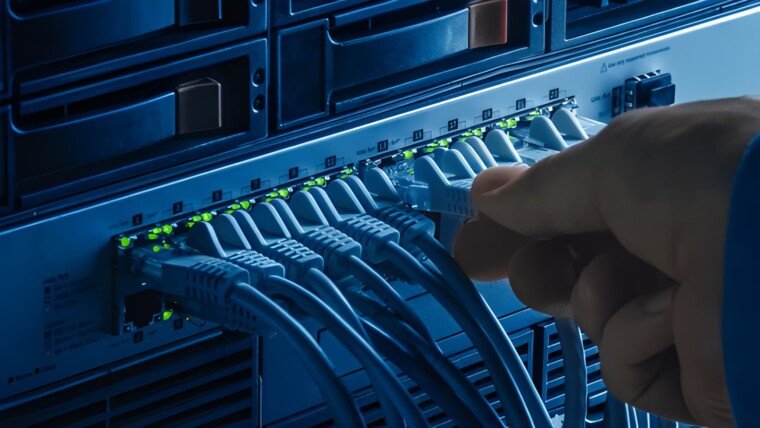A well-planned cabling system isn’t just about neat wiring—it’s about building a reliable network infrastructure that can grow with your operations. Structured cabling provides a standardized approach to wiring that improves organization, minimizes downtime, and supports the high-speed data transmission required in industrial environments.
Unlike ad-hoc cabling, a structured system organizes data and voice cables into a unified platform, making it easier to manage and troubleshoot. For plants operating 24/7, that efficiency is critical.
Key Components of Structured Cabling Systems
To understand why structured cabling is crucial, it helps to break down its main components:
-
Horizontal Cabling: Connects workstations and equipment to telecommunications rooms.
-
Backbone Cabling: Links telecommunication rooms, main equipment rooms, and entrance facilities.
-
Patch Panels and Cable Trays: Ensure cables are routed and labeled correctly for ease of maintenance.
-
Racks and Enclosures: Secure and organize network components in a centralized location.
Each of these components plays a specific role in optimizing performance and ensuring uptime in demanding manufacturing settings.
Benefits of Structured Cabling for Industrial Environments
A manufacturing plant demands resilience, scalability, and speed. Here’s how structured cabling delivers:
-
Reduced Downtime: A well-organized system allows for quick identification of faults.
-
Scalability: Easily add new machines, computers, or IoT devices without needing to rewire.
-
Better Airflow & Safety: Organized cables reduce fire hazards and improve cooling efficiency.
-
Cost-Efficient Maintenance: Easier access means less time and money spent on repairs or upgrades.
For facilities relying on real-time data, machine-to-machine communication, and extensive automation, these benefits are invaluable.
How Cabling Supports Automation and IoT
As manufacturers adopt Industry 4.0 technologies, including smart sensors and predictive maintenance systems, the need for high-speed and high-capacity cabling grows. Structured cabling supports:
-
Sensor Integration
-
SCADA Systems
-
Machine Vision Cameras
-
Cloud-Based Control Systems
These technologies need uninterrupted data flow, and structured cabling is the backbone that ensures this happens consistently.
Common Challenges in Manufacturing Cabling Projects
Structured cabling in industrial spaces isn’t without its hurdles:
-
Harsh Environments: Exposure to heat, moisture, dust, and vibration requires industrial-grade cables and secure enclosures.
-
Distance Limitations: Long manufacturing floors might push the limits of copper cabling, requiring fiber optics.
-
Electromagnetic Interference (EMI): High-powered machinery can cause interference. Shielded cabling is often a must.
Working with experts familiar with these challenges is critical to avoid performance issues.
Working with Experts for Installation
Choosing experienced providers for installation is crucial. If you’re based in the UK, hiring professional data cabling services in London can ensure compliance with British standards, avoid costly rewiring, and support long-term business growth.
These providers understand the unique demands of manufacturing environments and can tailor structured cabling systems accordingly. Their expertise ensures the system not only meets current needs but is future-proofed for expansion.
The Role of Cabling in Security Systems
Modern plants also need advanced security systems—from CCTV and access control to intrusion detection. All of these rely on a fast and reliable network infrastructure. That’s where structured cabling comes in.
Hiring a security system installer in London who collaborates with cabling professionals ensures your entire facility is covered—without overloading your network or creating cable clutter. Structured cabling allows seamless integration of video surveillance, alarms, and control panels into one centralized platform.
Compliance and Safety Considerations
Structured cabling must meet health and safety standards, especially in manufacturing. This includes:
-
Cable fire ratings
-
Proper labeling and documentation
-
Load-bearing compliance for cable trays and enclosures
-
Ingress protection (IP) ratings in exposed areas
A proper installation team ensures every element aligns with UK safety regulations.
Planning for Future Expansion
One of the major advantages of structured cabling is future scalability. As your plant grows or adopts new technologies, a well-designed cabling system can accommodate those changes with minimal disruption.
Including excess capacity in cable trays, using modular components, and documenting the entire system thoroughly are smart ways to prepare for the future.
Conclusion: Choosing the Right Cabling Partner
Structured cabling isn’t just a utility—it’s an investment in your plant’s performance, safety, and scalability. By working with reputable data cabling services in London, manufacturers can build a network that supports today’s operations and tomorrow’s innovations.
Whether you’re upgrading an older facility or building from scratch, structured cabling should be one of your first considerations. It supports everything from automation and IoT to security systems and cloud-based operations, making it the invisible engine behind industrial success.
Ready to upgrade your manufacturing plant with reliable and scalable structured cabling? Our expert team delivers industry-grade solutions tailored to your facility’s needs. Ensure smooth operations—inquire now and get a customized quote today!
Read more blogs: Data Cabling for Small Businesses: What You Need to Know




